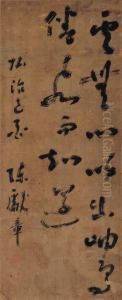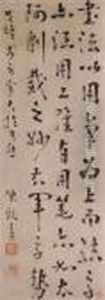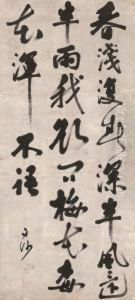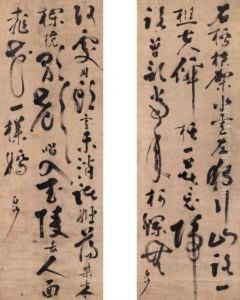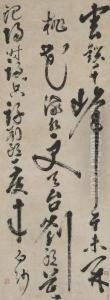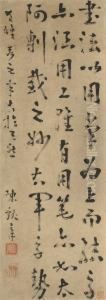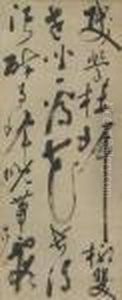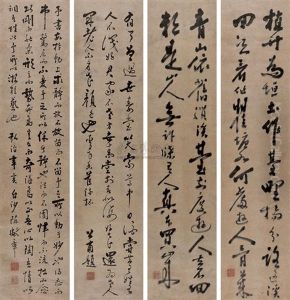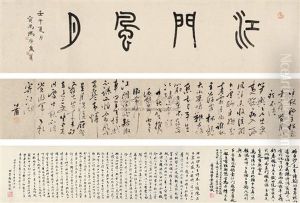Chen Xianzhang Paintings
Chen Xianzhang, also known by his courtesy name, Chen Baisha, was a notable scholar, painter, and calligrapher during the Ming Dynasty in China. Born in 1428 in Baisha, which is in modern-day Zhongshan, Guangdong, Chen was an influential figure in the development of the scholarly and artistic culture of his time.
Chen's education was steeped in the Confucian classics, and he passed the imperial civil service examinations at a young age. However, he soon grew disenchanted with the idea of an official career and chose instead to dedicate his life to teaching and scholarly pursuits. He became a renowned educator, founding a school where he taught and influenced many students, thereby spreading his ideas widely. His teachings emphasized the importance of practical moral action and the application of Confucian principles in everyday life. This approach was in contrast to the more rigid and orthodox Neo-Confucianism that dominated the intellectual landscape of the time.
As an artist, Chen Xianzhang was known for his calligraphy and his contributions to the Southern School of Chinese painting, which emphasized a more freehand and expressive style as opposed to the detailed and meticulous Northern School. His artwork, much like his scholarly teachings, reflected a philosophy that valued personal expression and the spontaneous manifestation of one's inner spirit. Chen's calligraphy was admired for its energy and fluidity, characteristics that mirrored his belief in a direct, unencumbered expression of personal integrity and character.
Chen Xianzhang's influence extended beyond his own lifetime, as his students continued to propagate his teachings. His legacy is seen not only in the world of Chinese philosophy and education but also in the arts, where his style of calligraphy and painting continued to inspire generations of artists. Chen passed away in 1500, leaving behind a body of work and a lineage of thought that would endure as part of China's rich cultural heritage.
